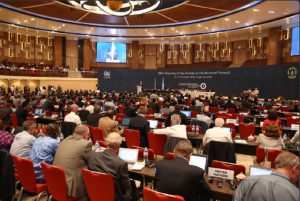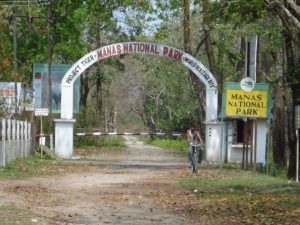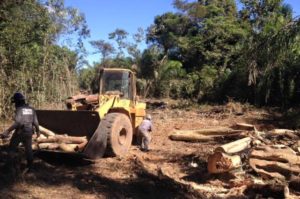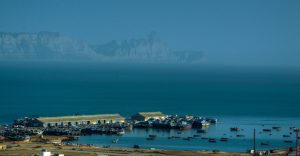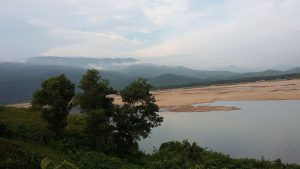Some seismologists associated with the government of India say that climate change has some influence on occurrence of earthquakes. Others say more research is needed before any connection can be proved or disproved.
“We were not bothered even 10 years ago about the influence of climate change on occurrence of earthquakes, but now a lot of work has been going on globally, particularly in Scandinavian countries, to show that there is some influence of climate change on earthquakes,” Vineet Kumar Gahalaut, director of National Centre for Seismology under Ministry of Earth Sciences, told thethirdpole.net.
“Factors like tide to anthropogenic actions like petroleum extraction to changes in seasonal rainfall and its frequency — all are contributing to occurrence of earthquakes,” Gahalaut said. A group of geologists have found in Nepal that climatic changes have been influencing low-intensity earthquakes in the area, he said. The Himalayan country is known to be a hotbed of climatic changes and has suffered from a number of earthquakes in recent times. Gahalaut however pointed out that no specific studies have yet been undertaken to establish the correlation.
“Definitely there is some relationship. I believe that all these phenomena are interlinked,” P. R. Baidya, another scientist from National Centre for Seismology, told thethirdpole.net. He however clarified that more research is required to pinpoint the nature of the relationship.
Scientific differences
Not all scientists subscribe to this linkage between earthquakes and climate change. “Climate change has no impact on incidence of earthquakes but earthquakes may have impacts on climate,” geophysicist and senior seismologist Shankar Nath of the Indian Institute of Technology at Kharagpur, West Bengal, told thethirdpole.net.
Kolkata-based geographer Sujib Kar had claimed in a paper published in the International Journal of Engineering Science Invention that global warming has been “increasing seismicity and probability of earthquake,” as reported by thethirdpole.net on August 8, 2016. Kar, who teaches in Vidyasagar College of Calcutta University, wrote this in a paper titled Impact of global warming on the probable earthquake in the Bengal basin area with respect to the global scenario that was based on secondary data.
See: Climate change raises earthquake risk
Kar’s paper claims that the continuous warming is increasing the volume of seawater, which in turn is triggering imbalance among the subsurface tectonic plates leading to the rising number of earthquakes.
Nath said the rise in sea levels due to climate change is not enough to trigger earthquakes. “On the contrary, I would say that a submarine earthquake (earthquakes under the sea) may have effect on sea level rise, sea circulation pattern and ocean waves. It may well trigger release of gases trapped under surface,” he said.
“The recent, human-induced acceleration in global warming has too short a time span to have any noticeable impact on the earth’s tectonic processes that can cause earthquake,” Sunanda Bandapadhyay, a geographer from Calcutta University, told thethirdpole.net.
Gahalaut admitted that not much work has been yet done in India on the relationship between climate change and earthquakes. He expressed the hope that a number of studies now proposed would throw further light on the issue.
Body of evidence
Bill McGuire, a professor of geophysical and climate hazards at University College London, has been propagating the relationship for long. “Firstly, this is not my theory, but is very well established. Secondly, there is a huge amount of evidence for a robust relationship between climate change and earthquakes, particularly in Scandinavia and North America at the transition from the last Ice Age. Furthermore, we are already seeing a seismic response to recent ice unloading (of ice) in Alaska,” McGuire told thethirdpole.net over email.
McGuire pointed to a series of research findings in favour of his stand, many of which were published in the Philosophical Transactions of the Royal Society A: Mathematical, Physical & Engineering Sciences on the thematic issue on Climate Forcing of Geological and Geomorphological Hazards in 2010.
“Across the world, as sea levels climb remorselessly, the load-related bending of the crust around the margins of the ocean basins might – in time – act to sufficiently ‘unclamp’ coastal faults,” McGuire wrote in his book Waking the Giant: How a Changing Climate Triggers Earthquakes, Tsunamis and Volcanoes.
He further elaborated in his paper, titled Potential for a hazardous geospheric response to projected future climate changes, that “periods of exceptional climate change in earth history are associated with a dynamic response from the geosphere, involving enhanced levels of potentially hazardous geological and geomorphological activity.”
McGuire went on to add, “the response is expressed through the adjustment, modulation or triggering of a broad range of surface and crustal phenomena, including volcanic and seismic activity” and that “in relation to anthropogenic climate change, modelling studies and projection of current trends point towards increased risk in relation to a spectrum of geological and geomorphological hazards in a warmer world, while observations suggest that the ongoing rise in global average temperatures may already be eliciting a hazardous response from the geosphere.”
Other natural hazards exacerbated by climate change
Other scientists have also linked the changing climate, particularly global warming, with events like slope failure in the European Alps, which has increased in the last two to three decades. C. Huggel and others in their paper titled Recent and future warm extreme events and high-mountain slope stability found, “All the failures were preceded by unusually warm periods.”
Another paper by M. Keiler and others said, “Climate and environmental changes associated with anthropogenic global warming … impact on land-surface stability, and lead to increased frequency and magnitude of natural mountain hazards, including rock falls, debris flows, landslides, avalanches and floods.”
![<p>More research needs to be done to explore if climate change is linked to earthquakes [image by Clark Wang/Flickr]</p>](https://dialogue.earth/content/uploads/2016/10/earthquake-clark-wang.jpg)


